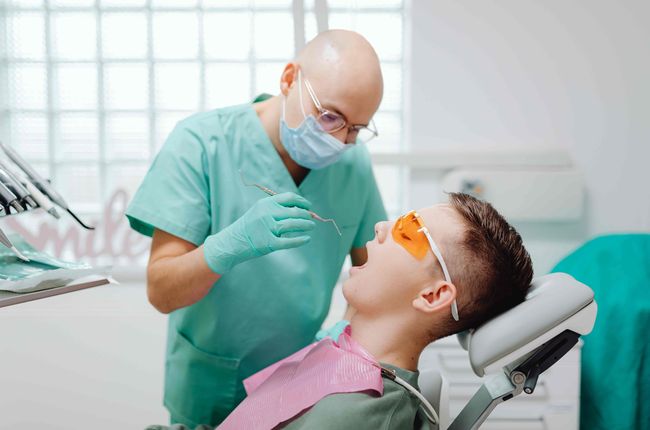Dental implants have revolutionized the world of restorative dentistry, offering a reliable solution for those seeking to replace missing teeth. For patients considering this transformative option, understanding the underlying process is key to achieving successful long-term outcomes. One critical aspect that deserves attention is osseointegration—a biological phenomenon that plays a pivotal role in securing dental implants in place.
Imagine your new tooth root fusing seamlessly with your jawbone, creating a sturdy foundation for years of function and aesthetics. This connection doesn’t just provide stability; it restores confidence and improves overall oral health. Whether you’re exploring dental implant restoration in Atlanta, GA, or are already on your journey toward a radiant smile, grasping the concept of osseointegration can empower you as an informed patient.
Let’s delve into what makes osseointegration so essential and how it influences every facet of your dental implant experience.
The Process of Osseointegration in Atlanta GA
Osseointegration is a fascinating biological process that occurs when a dental implant fuses with the surrounding bone. This remarkable integration is crucial for the stability and longevity of dental implants.
Initially, after the implant is placed into the jawbone, a healing phase begins. During this time, blood vessels form around the implant site. These vessels deliver essential nutrients to promote cell growth.
As weeks pass, bone cells start to migrate toward the surface of the implant. They anchor themselves onto it, forming strong bonds that ensure durability and support.
The success of osseointegration depends on multiple factors, such as bone quality and density. A well-structured jawbone enhances contact between natural tissue and artificial material.
Understanding this intricate process can help patients appreciate why proper care during recovery is vital for successful dental implant restoration in Atlanta, GA.
Factors Affecting Osseointegration Success
Osseointegration is a complex process influenced by various factors.
- The quality and quantity of the jawbone play a crucial role. If there's insufficient bone density, it can hinder the implant's ability to fuse with the bone.
- Patient health is another significant factor. Conditions like diabetes or autoimmune disorders may impact healing time. Medications that affect bone metabolism can also interfere with successful integration.
- Tissue quality surrounding the implant cannot be overlooked either. Healthy gums provide stability and support, while infection or inflammation can lead to complications.
- Additionally, lifestyle choices matter greatly. Smoking impairs blood flow and delays healing, making osseointegration more challenging.
- Surgical technique significantly affects outcomes. An experienced dentist will employ methods that maximize contact between the implant and bone for optimal success rates in dental implant restoration in Atlanta, GA.Contact us to learn more.
Common Challenges and Solutions for Osseointegration
Osseointegration can face several challenges that may hinder the success of dental implant restoration in Atlanta, GA.
- One common issue is infection at the surgical site. This can significantly affect healing and integration with bone.
- Another challenge is insufficient bone density or volume. Patients with severe gum disease or tooth loss might not have enough healthy bone to support an implant effectively.
- Additionally, smoking and certain medical conditions like diabetes can impede osseointegration. These factors increase the risk of complications during recovery.
- Solutions often involve pre-surgical assessments to evaluate bone health. Bone grafting procedures may be recommended for those lacking adequate density.
- For smokers, quitting before surgery can greatly improve outcomes. Monitoring patients closely post-surgery also helps identify potential issues early on, allowing for timely interventions when needed.
Steps to Ensure Successful Osseointegration
To ensure successful osseointegration, maintaining optimal oral hygiene is crucial. Regular brushing and flossing help prevent infections that could jeopardize the healing process.
Choosing a skilled dental professional also plays a vital role. An experienced implant dentist understands the nuances of placement and can tailor the procedure to your specific needs.
Following post-operative care instructions is essential for recovery. This includes avoiding hard or sticky foods that may disrupt the implant site during healing.
Additionally, lifestyle choices impact osseointegration success. Quitting smoking and reducing alcohol consumption promote better blood flow, enhancing tissue healing around implants.
Regular follow-up visits are important too. These check-ins allow your dentist to monitor progress and address any concerns promptly, ensuring everything stays on track for long-term success in dental implant restoration in Atlanta, GA.
Long-Term Benefits of a Successful Osseointegration
Successful osseointegration offers numerous long-term benefits for dental implant patients.
- One of the most significant advantages is improved stability. When the implant fuses seamlessly with the jawbone, it provides a solid foundation for replacement teeth.
- This fusion also leads to enhanced chewing efficiency. Patients can enjoy a wider variety of foods without worrying about discomfort or instability in their implants.
- Another notable benefit is longevity. With proper care and successful osseointegration, dental implants can last many years—often decades—making them a cost-effective solution over time.
- Additionally, strong integration contributes to bone health. It helps prevent bone loss in the jaw area, maintaining facial structure and aesthetics.
- Successful osseointegration boosts patient confidence. Knowing that your dental restoration is secure allows you to smile freely and engage socially without hesitation or worry.
Conclusion: Importance of Understanding Osseointegration for Dental Implant Patients
Understanding osseointegration is essential for anyone considering dental implant restoration in Atlanta, GA. This key biological process directly impacts the success and durability of implants. By grasping how osseointegration works, patients can make informed decisions about their oral health.
Knowledge equips patients with the tools to ask their dentists vital questions. It also empowers them to adhere to aftercare instructions that promote healing and integration. Recognizing potential challenges allows for better preparation, ensuring a smoother journey toward achieving a healthy smile.
Long-term benefits from successful osseointegration are significant. Patients enjoy improved functionality, aesthetics, and overall quality of life when they invest in understanding this crucial aspect of dental implants. Embracing this knowledge leads not just to immediate satisfaction but lasting outcomes that enhance everyday living.
For those navigating the world of dental implants, awareness around osseointegration paves the way for confident choices and positive experiences at every step of the process.
Our prosthodontist and the team are happy to explain the dental treatments offered at the practice in detail. If you would like to learn more, we invite you to give Prosthodontist in Atlanta, GA a call at (404) 255-4575 and schedule a consultation.






